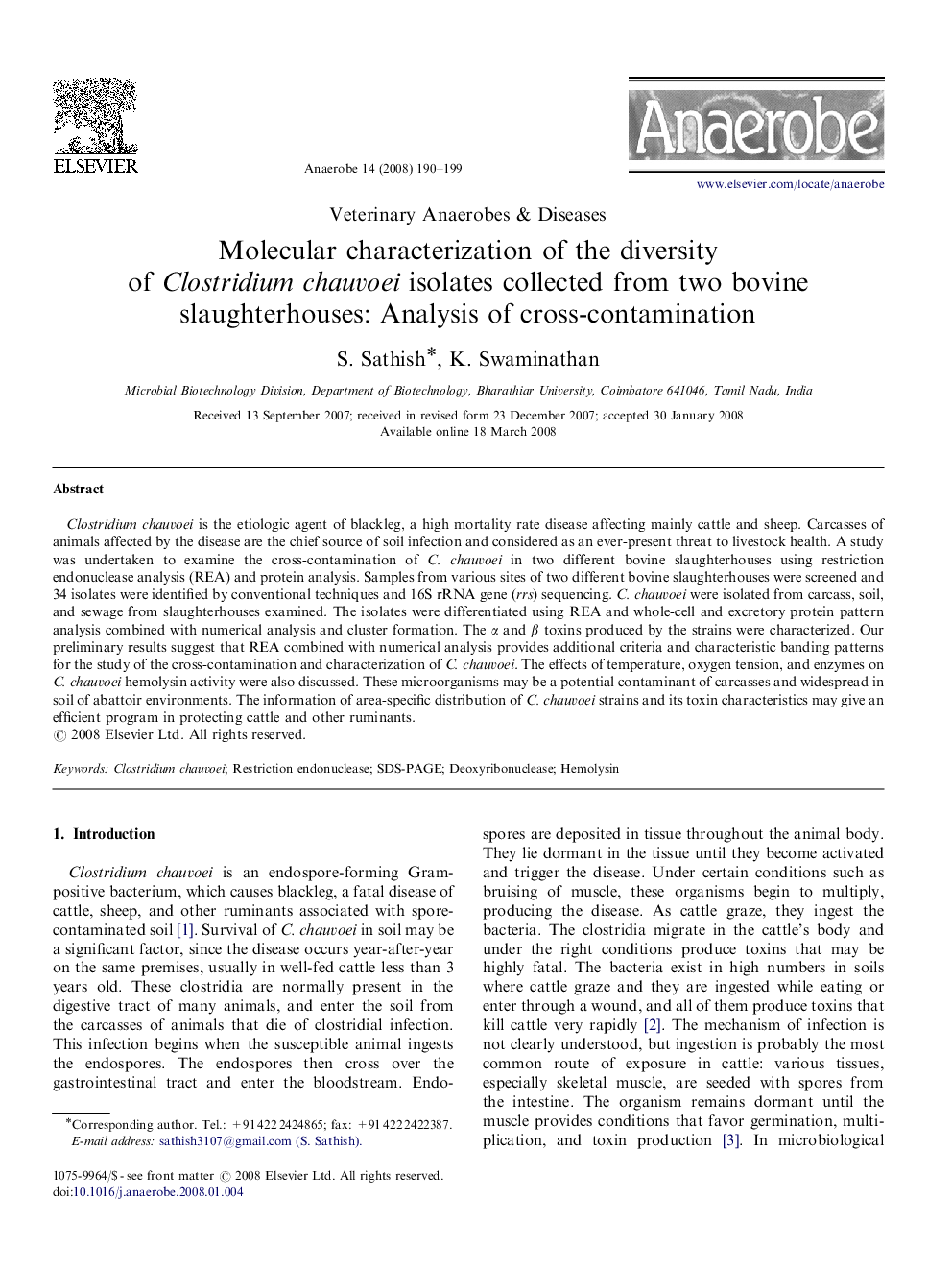| Article ID | Journal | Published Year | Pages | File Type |
|---|---|---|---|---|
| 3395765 | Anaerobe | 2008 | 10 Pages |
Clostridium chauvoei is the etiologic agent of blackleg, a high mortality rate disease affecting mainly cattle and sheep. Carcasses of animals affected by the disease are the chief source of soil infection and considered as an ever-present threat to livestock health. A study was undertaken to examine the cross-contamination of C. chauvoei in two different bovine slaughterhouses using restriction endonuclease analysis (REA) and protein analysis. Samples from various sites of two different bovine slaughterhouses were screened and 34 isolates were identified by conventional techniques and 16S rRNA gene (rrs) sequencing. C. chauvoei were isolated from carcass, soil, and sewage from slaughterhouses examined. The isolates were differentiated using REA and whole-cell and excretory protein pattern analysis combined with numerical analysis and cluster formation. The α and β toxins produced by the strains were characterized. Our preliminary results suggest that REA combined with numerical analysis provides additional criteria and characteristic banding patterns for the study of the cross-contamination and characterization of C. chauvoei. The effects of temperature, oxygen tension, and enzymes on C. chauvoei hemolysin activity were also discussed. These microorganisms may be a potential contaminant of carcasses and widespread in soil of abattoir environments. The information of area-specific distribution of C. chauvoei strains and its toxin characteristics may give an efficient program in protecting cattle and other ruminants.
